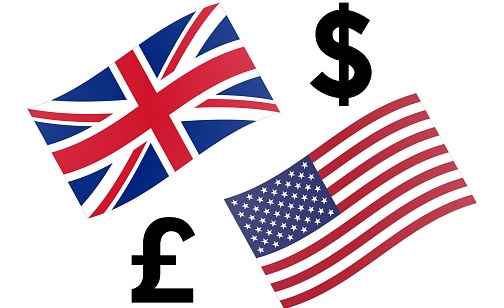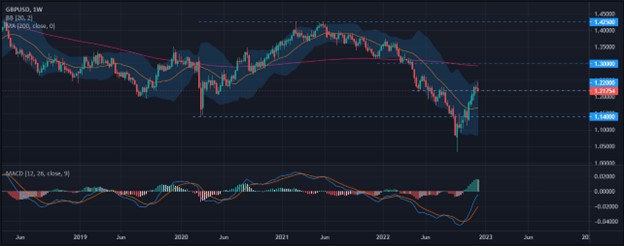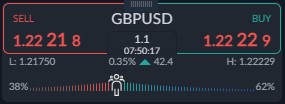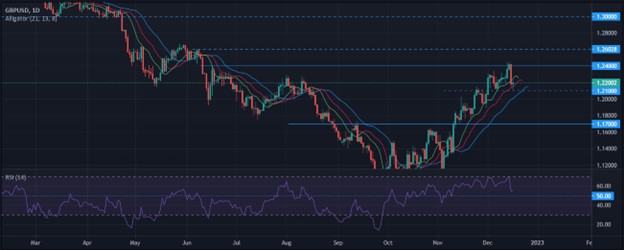The GBPUSD suffered losses by -0.36% to close the week bearish as bulls struggle to hold on to gains above the 1.2200 level. The drop in UK retail Sales early Friday morning caused the pair to trim earlier gains as it signals a slowdown of consumer activity in November. The Retail Sales YoY came in unchanged at -5.9% while MoM data fell to -0.4% against 0.3% surveyed.
Moreso, the dovish speech by BoE’s Governor Bailey outweighed the 50bps hike by the BoE on Thursday. The statement indicated that the BoE could slow down tightening as the UK economy begins to witness a cooling inflation trend. The UK CPI YoY data fell from 11.1% to 10.7% earlier this week. Two of the BoE monetary policy members voted for maintaining rates unchanged confirming a possible pivot in tightening pace at the next policy meeting.
However, the bulls could still have a chance to rally higher as the US dollar faces major headwinds in the near term. The US Retail Sales dropped to -0.6% against -0.1% surveyed while the Philly Fed manufacturing Index slowed down to -13.8 vs -10.0 forecasted. The US inflation YoY figure also slowed down from 7.3 surveyed to 7.1%. Despite the 50bps Fed hike on Wednesday, the dollar may still struggle to find ground in the near term. There will be a release of US preliminary PMI data later in the day.
Weekly Chart Analysis
The GBPUSD trimmed weekly gains as bulls struggle to hold on to gains above the 1.2200 level, a 5-months high. The pair could retrace towards the 1.17000 coinciding with the Bollinger Band Baseline and a break below that could see an extended drop towards the 1.1400 a previous support level. The MACD indicator currently shows that the pair is bullish suggesting that the near-term drop could be limited and to the upside, the 1.3000 and 1.42500 levels could be the near-term targets.
However, a break below the 1.1400 level could invalidate the current bullish outlook as bears overtake the direction of the market. Key levels to watch out for are the 1.1000 and 1.0500 levels to the downside.
The ActivTrader Sentiment tool suggests that 62% of retail traders are bullish on the GBPUSD. The sentiment could have been triggered by the 50bps hike by the BoE to 3.50% on Thursday. The UK services PMI data jumped from 48.8 to 50.0 suggesting the economic outlook pivoting into an expansionary zone in the near term. The drop in US CPI data also contributed to traders’ pricing in further a pivot in Fed tightening path.
However, the pound could drop lower as UK Retail Sales miss estimates at -0.4% vs 0.3%, signalling high-interest rates’ impact on consumer spending. The BoE Governor Bailey indicated that the central bank could ease tightening as begins to fall from a 41-year high as rates hit a 14-year high at 3.50%.
Daily Chart Analysis
The GBPUSD extended drop from a 1.2450 high as the pair gets into a corrective pattern from a 6-months high. Bears may target the 1.21000 level, a previous resistance-turned-support. The RSI indicator suggests that the pair is currently in a corrective phase as the indicator trades lower towards the 50.00 neutral level. A hold above the 1.2100 near-term support could see bulls target the 1.2600 and 1.3000 levels.
However, a break below 1.2100 could trigger selling pressure towards 1.1700, a previous resistance-turned-support. The Williams Alligator indicator suggests that the pair is bullish but a price break below the dynamic support and resistance indicator could cause increased selling pressure and the next key level is at the 1.17000 level.







